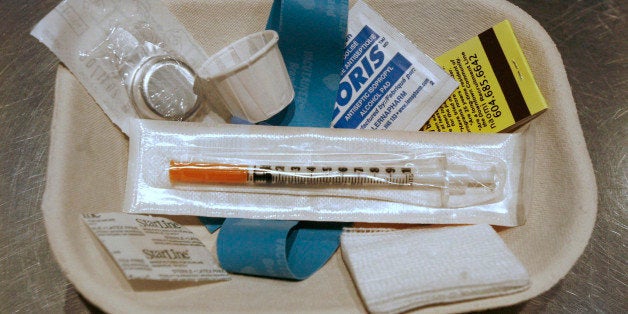
Supervised Injection Facilities (SIFs) have garnered a lot of attention recently , primarily due to advocates, elected officials, and public health experts suggesting them as a viable solution to mitigate the nation's opioid overdose crisis.
SIFs are medically supervised sites where drug users are able to inject pre-obtained substances under the supervision of medical professionals who can administer the overdose reversal drug, Naloxone, as well as connect participants to treatment, detox, and other services.
SIF supporters call them a necessary, common-sense public health intervention for curbing the incidence of death, disease, and infection associated with public injecting. Cities around the country, from Seattle, Baltimore, San Francisco, New York City, and even Ithaca, New York, are all making strides to establish the first legal site of its kind in the United States.
While supervised injection facilities are nothing new, opening a SIF in the United States is part of a new wave of solutions grounded in compassion, reason and public health. Yet some Americans believe that the mainstreaming of the supervised injection facility conversation in the US is, arguably, prompted by the changing public face of the heroin epidemic. By all accounts the "new face" of the opioid/heroin epidemic is younger, whiter and wealthier than the face ofthe crack scourge just three decades ago or even the heroin '"epidemic" in urban cities 50 years ago.
In October 2015, the New York Times declared that with increased perception of overdose as a 'white problem' there are now calls forth more compassion for the user. It now encourages policy innovation and collective energy put toward conceiving new solutions to manage the overdose crisis by meeting users where they're at, instead of meeting them with handcuffs. These are steps in the right direction but fail to account for our long history of racial disparities when it comes to drug policy.
As two young Black women drug policy reformers, we can't help but notice that the necessary and common sense public health interventions proposed today weren't all that palatable 50 years ago when heroin overdoses plagued Black and Latino communities or 30 years ago when crack hit them right after. The conventional response even until the late 2000s has been incarceration, coerced treatment and community neglect, which has led to the mass criminalization of people of color today. Even in today's conversation around the opioid/heroin overdose the increased numbers of addiction and overdose deaths of Black and Latinos is rarely reported or mentioned in public discussion.
Yet, despite the hypocrisy and systematic disregard for Black Lives, supervised injection facilities are an important piece in repairing the harms of the drug war and increasing our community's access to services. In fact SIFs serve communities of color arguably more immediately than white communities. The primary function of SIFs is to minimize public injection by bringing it into a closed space, which necessarily curbs law enforcement engagement with the person using drugs, and as we said earlier, it is communities of color that have born the brunt of excessive policing and criminalization throughout the drug war.
Drug misuse and addiction among white people is now triggering compassion, but for us black folks it triggers suspicion,fear, the clutch of a purse, and/or the grip of a trigger. By allowing users clean injection materials, and removing the need for a user to carry those materials on their person, SIFs reduce the risk that they will face harassment, arrest and an accompanying criminal record. Less criminalization of black and brown people who use drugs helps encourage the process of recovery and removes barriers to housing, jobs, and education that would have resulted from an arrest. In addition, the capacity of SIFs to provide frontline services and linkage to treatment and care could benefit our under-served communities.
A supervised injection facility is a public health intervention. But it doesn't stop there. SIFs not only reduce the potential harms associated with drug use; they also reduce the harms associated with failed drug policies--namely, the over policing and criminalization of Black and Latino people. SIFs aren't just an answer to issues surrounding drug related health issues; they're also a step toward the reduction of criminalization for those communities most targeted by the war on drugs, which may be kinder and gentler for white people, but which continues to rage unabated for Black and Latino people.
Kristen Maye is a Policy Associate and Kassandra Frederique is the New York State Director at the Drug Policy Alliance (www.drugpolicy.org)